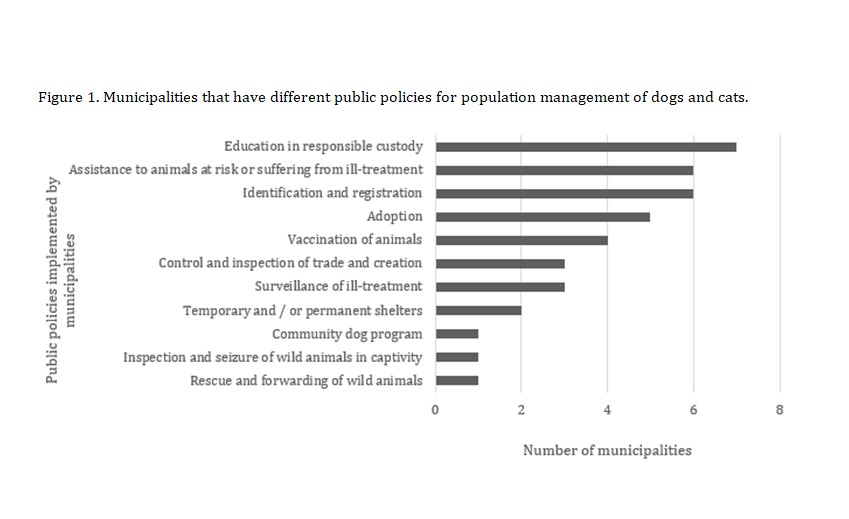Public policies for population management of dogs and cats and social indicators of the Curitiba Metropolitan Region in Brazil
DOI:
https://doi.org/10.21708/avb.2019.13.4.8504Resumo
The objective of this study was to map public policies for population management of dogs and cats in the Curitiba Metropolitan Region (CMR) and to assess their correlations with social indicators. The data used consisted of answers from questionnaires sent via email to public managers of 14 municipalities of the CMR, and data from the Brazilian Institute of Geography and Statistics (IBGE) and Parana Institute for Economic and Social Development (IPARDES). Nine of the 14 municipalities (64.29%) had public policies for population management of dogs and cats, and five (35.71%) had no such public policies. Six (42.86%) municipalities had no other public policy related to population management of dogs and cats, besides population management; and eight (57.14%) had other public policies. The three indicators that had significant and positive correlation with the existence of these public policies were Total Gross Domestic Product (GDPt) (0.028), Income Inequality (GINI index) (0.039), and Human Development Index (HDI) (0.039). However, the decision for the implementation of public policies related to animals depends on the local government because investments on these policies are not considered in the municipal tax revenue.
Downloads

Downloads
Publicado
Edição
Seção
Licença
Autores que publicam na Acta Veterinaria Brasilica concordam com os seguintes termos: a) Autores mantém os direitos autorais e concedem à revista o direito de primeira publicação, com o trabalho simultaneamente licenciado sob a Licença Creative Commons Attribution que permite o compartilhamento do trabalho com reconhecimento da autoria e publicação inicial nesta revista. b) Autores têm autorização para assumir contratos adicionais separadamente, para distribuição não-exclusiva da versão do trabalho publicada nesta revista (ex.: publicar em repositório institucional ou como capítulo de livro), com reconhecimento de autoria e publicação inicial nesta revista. c) Autores têm permissão e são estimulados a publicar e distribuir seu trabalho online (ex.: em repositórios institucionais ou na sua página pessoal) a qualquer ponto antes ou durante o processo editorial, já que isso pode gerar alterações produtivas, bem como aumentar o impacto e a citação do trabalho publicado (Veja O Efeito do Acesso Livre).


 Esta obra está licenciada com uma Licença
Esta obra está licenciada com uma Licença 